Wingspan Review

In 2019, designer Elizabeth Hargrave announced her arrival to the board game world with the release of Wingspan. Published by Stonemaier Games, it’s a game of collecting birds in your habitats to score points. The artwork is absolutely beautiful throughout, with fantastic components, but that’s something that can be said of a lot of games now. So why the fuss about Wingspan, and should you buy it?
Ruffling feathers
If you’ve been around the board game scene in the last couple of years, there’s a good chance you’ve already been exposed to Wingspan. It caused huge ripples when it landed in our pond, like a less-than-graceful duck coming in for a landing. The stark change in theme for a big game was a part of it. No fantasy, sci-fi or city-building here, just pretty birds and little pastel eggs. A big part of the fuss was also having Elizabeth’s name front and center on the box too.
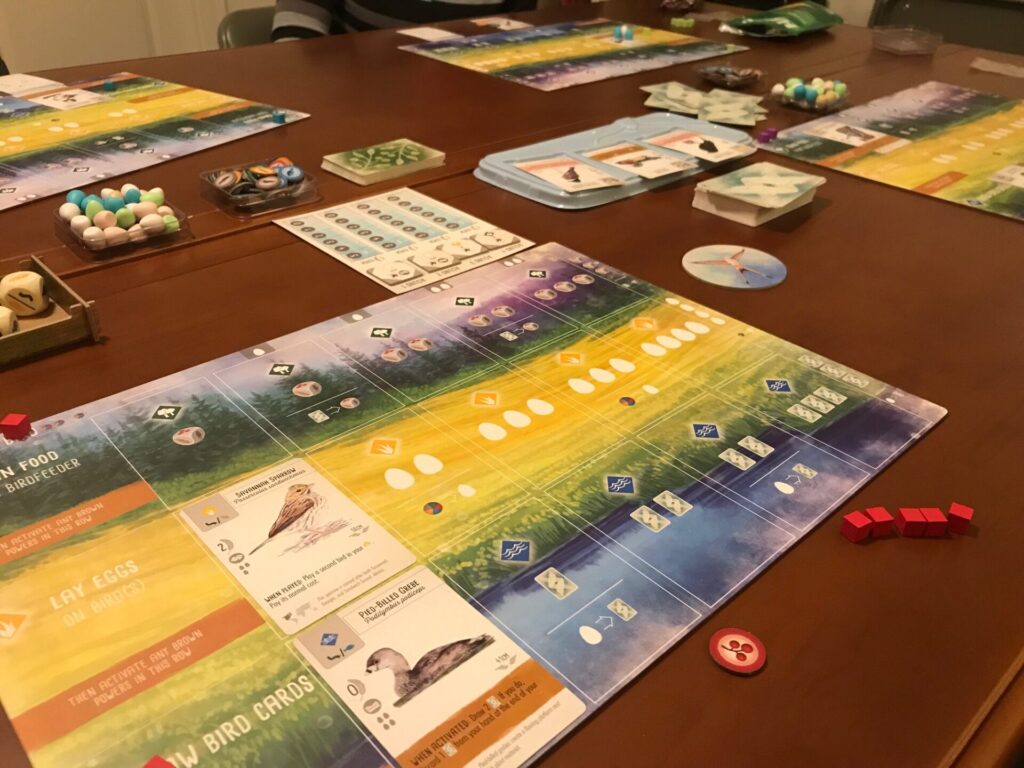
The fact that a best-selling game makes waves because it has a female designer shouldn’t matter, but it does matter. The board game world has a large lens cast on it at the moment, examining the dominance in the scene that straight, white males have. Diversity and inclusion are big issues, and Elizabeth’s game doing as well as it has was a watershed moment for many, and a bit of a wake-up call for everyone involved in the process of game design and publishing.
While that’s brilliant for our hobby as a whole, you’re probably here to find out if Wingspan is a good game or not, so let’s get into it.
Peacock posturing?
Each player in Wingspan has a board that represents their local environment. You need to collect food of different kinds in order to attract birds to nest on your board, and as the game progresses, the birds you collect form an engine. When you activate certain abilities, each of the birds in that row with a brown banner at the bottom get activated, and can combine in the most satisfying way to earn you big rewards.
Each bird’s card, in addition to having an absolutely gorgeous illustration, also tells you about its various attributes. The number of eggs it can house in its nest, the type of nest it builds, where it can build its nest, and the titular statistic – its wingspan. These facets matter, as shared scoring and individual scoring bonuses depend on them.
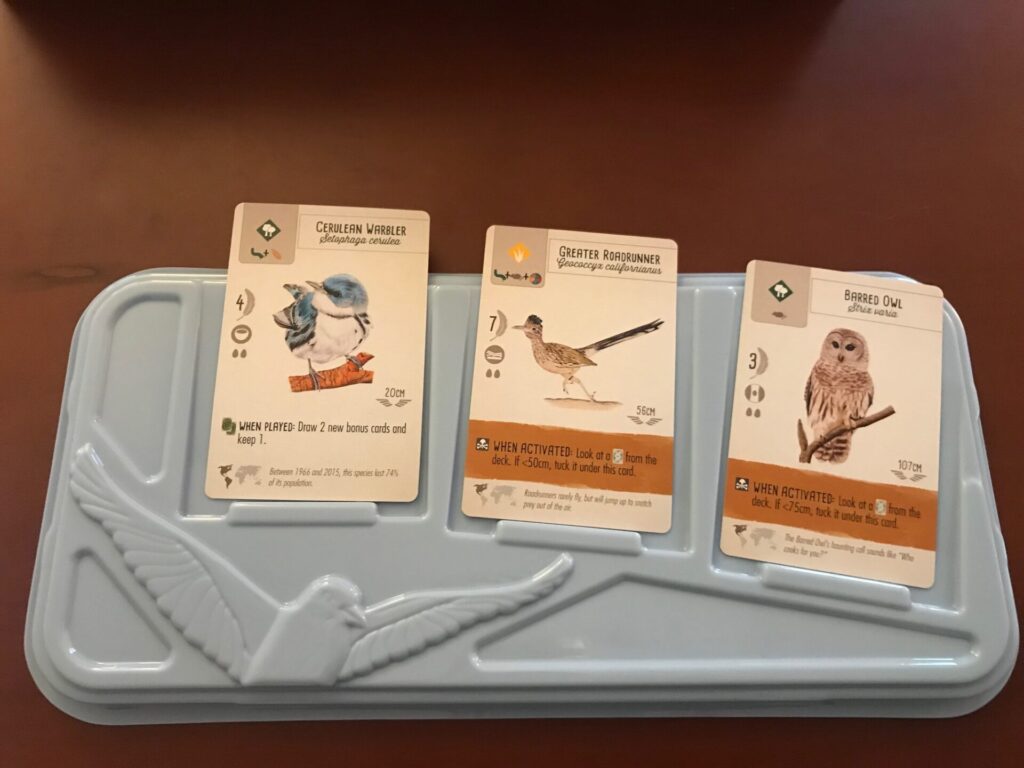
After four rounds have been played, the scores are tallied and the most birdmongous among you is declared the winner. In essence Wingspan is a drafting game of set collection and tableau building. It’s a good one too.
Golden goose
Wingspan is a really important game. It breaks down a lot of barriers and does something that so many games fail to do – it makes hobby gaming accessible. If I take my copy of Race for the Galaxy along to a family gathering, despite it being an amazing tableau-building game, like Wingspan, I know nobody will play. My parents and in-laws aren’t enthused by sci-fi, it leaves them cold. However, if I take ‘that bird game’, the theme, components and friendliness breaks down barriers, and people who wouldn’t ordinarily play a strategy game with me, will.
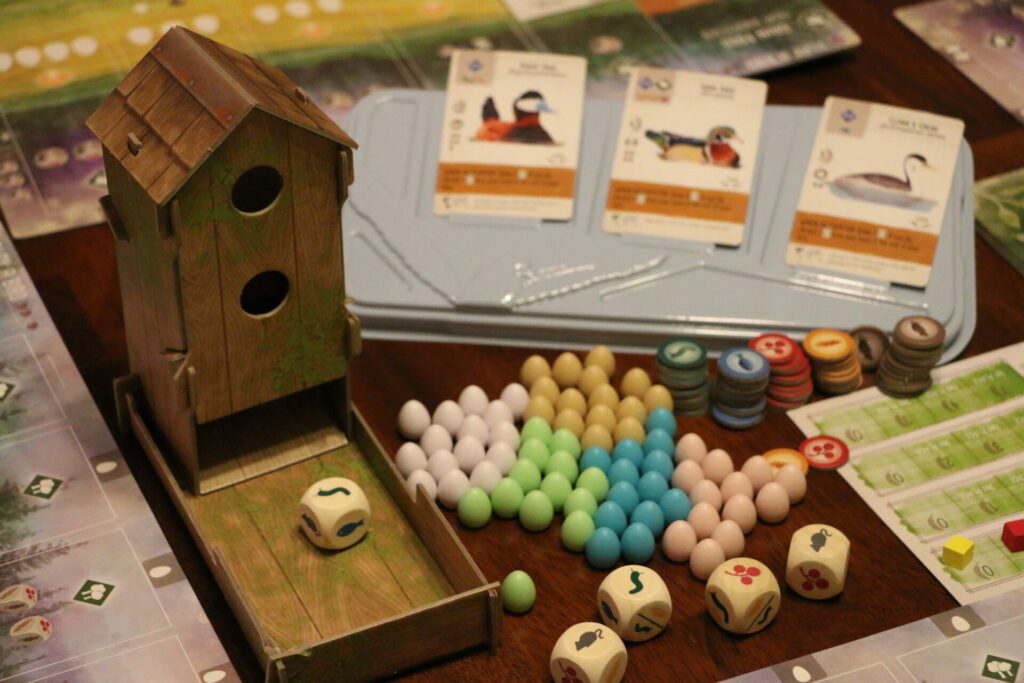
It’s a game that I’d probably place alongside The Quacks of Quedlinburg because of this, because it’s another of those games that offers a peek behind the curtain of the confusing world of hobby board games. It’s an introduction to mechanisms and concepts that are fundamental in game design, but with a welcoming, inviting theme. Think of it like someone smiling and taking your hand and saying “It’s okay, come and try it, it’s not as scary or difficult as you think”.
Breeding strategy
Wingspan faces one issue that other games with a large number of cards also do. It’s very difficult to cycle through the deck, and there are times you’re desperate for a certain type of card to come out, but it doesn’t. Terraforming Mars and Everdell are other examples of this, and for some players, that’s too frustrating. The thing to remember when you sit down to play Wingspan, is that it’s a game of reactive strategy.
I’m someone who likes to be able to form a strategy from very early in a game, knowing that if I plan well, I can make it happen. I can’t do that in Wingspan, because I’ve no idea what’s going to emerge. There are only three birds available in the market to choose from at any time, or one blind from the top of the deck, so you’ll never cycle through all 170(!) in one game.
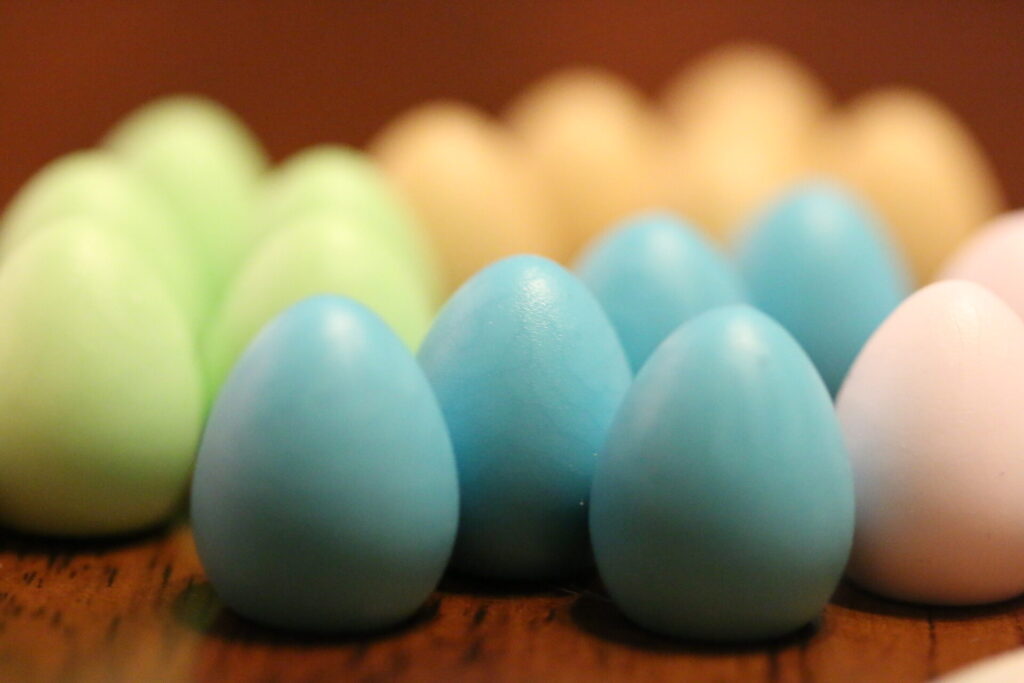
Here’s something I think is really important. It doesn’t matter that you can’t form a grand strategy. This is a medium-weight game in every sense, and it’s a game that can, and should, be played by gamers and non-gamers alike. I love the look on someone’s face when you see the cogs fall into place, and they tell everyone at the table “look at this, if I play this bird here, and do this, I get all this cool stuff”. Those are the moments when board games get their hooks into peoples’ brains, and don’t let go.
Final thoughts
Wingspan can be quite divisive in my experience. Hardcore gamers get turned-off by the random chance the cards introduce, but if you join a Facebook group for board games, you’re going to see far more posts in praise of the game. For the vast majority of the people who play the game, it’s a real hit, and it’s a game that I’ve seen, first-hand, bring people into the hobby. The expansions which introduce birds from other parts of the world sold like hot cakes, and deservedly so.
I really enjoy playing it. I’ll never turn down a game of Wingspan. My eight-year-old son learned the game very quickly, and even beat me by employing a strategy of laying as many eggs as possible, and making sure he picked the blue ones. The egg colours don’t matter in the game at all, but it’s another little aesthetic choice that further increases the appeal.
There’s a reason Wingspan is in the top 20 games on BGG, and ranked number one for family games. It’s a great game. It’s fun, it’s easy to learn, it’s beautiful on the table, and the eggs and bird box dice tower are irresistibly tactile. If there’s a gap in your collection for a medium-weight game that you want to appeal to just about anyone, Wingspan is the way to go.
Review copy kindly provided by Stonemaier Games. Thoughts and opinions are my own.
Wingspan is available from our sponsor – Kienda. Sign-up using this link to get 5% off your first order over £60.
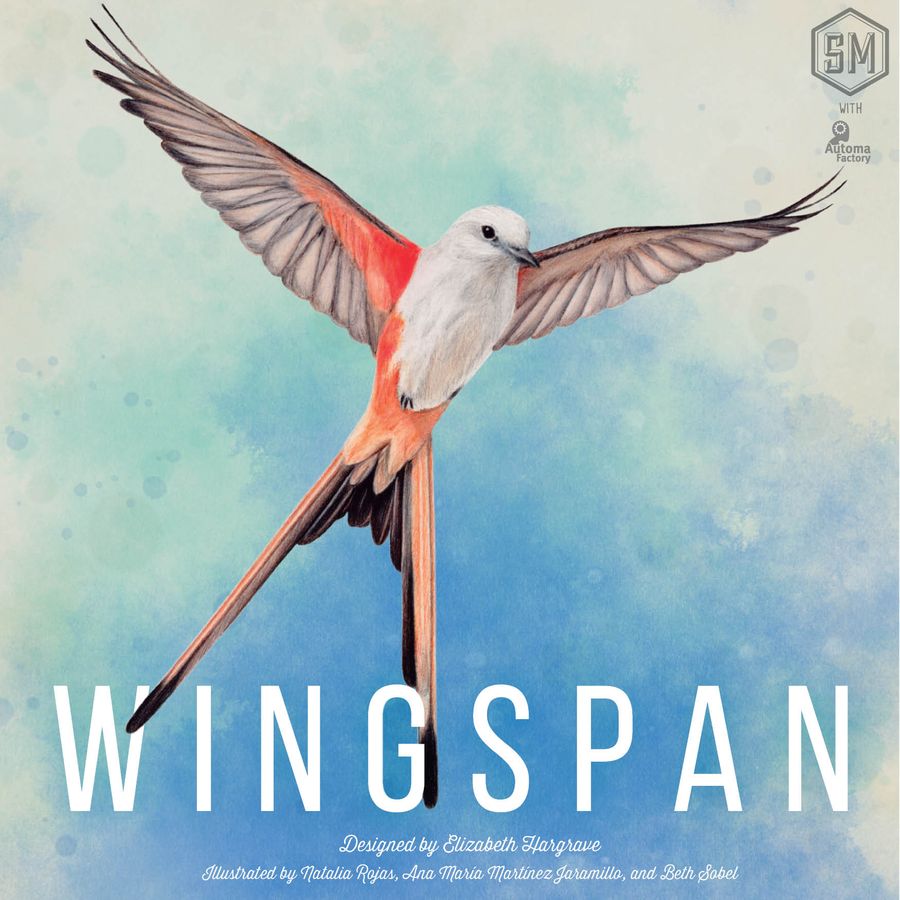
Wingspan (2019)
Designer: Elizabeth Hargrave
Publisher: Stonemaier Games
Art: Ana Maria Martinez Jaramillo, Natalia Rojas, Beth Sobel
Players: 1-5
Playing time: 45-75 mins







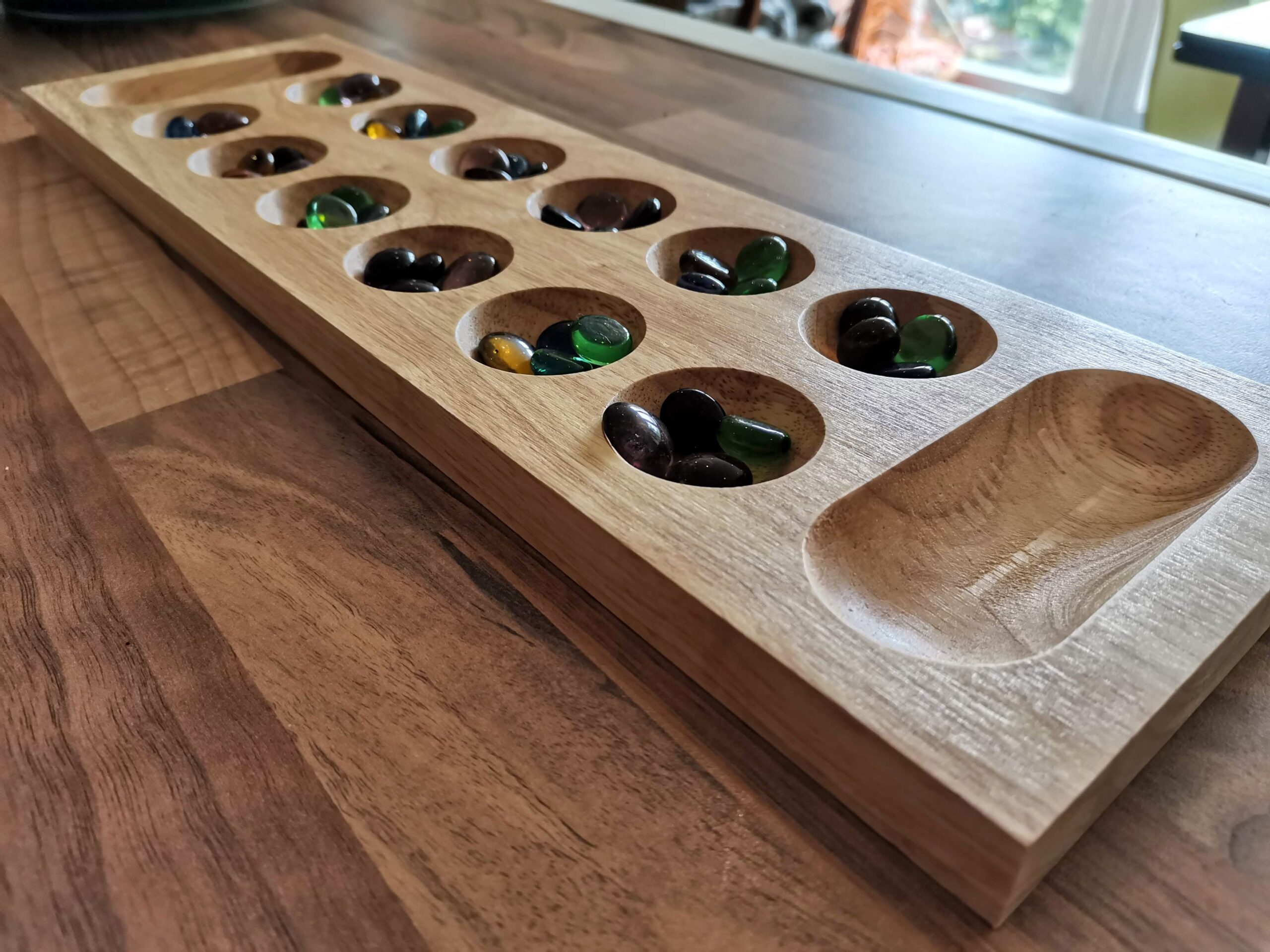




As a keen gamer and an even keener birder I really ought to be all over this, but my initial enthusiasm quickly died. I think the problem for me is that it doesn’t really seem to matter what I do. Unless the right combination of cards fall into my lap, I know that barring stupid mistakes, I will be competitive, I may win by a point or two, I may lose, but my actions don’t seem to make much difference. A shame, I so wanted it to be wonderful.
A fair point John, and something I tried to convey in the review too. I think to make a game that would fit into that gap of really showing the variety of birds, AND being able to be more strategic, the gameplay would need to be quite different. Having different decks of bird types for example, and changing the way scoring happens.
Like Everdell and Terraforming Mars, being able to cycle quickly through a huge deck of cards is the only way you can make these games very strategic, rather than reactive.
I play it solo online and sometimes with one friend. I think it’s a very well-designed game. I agree that the card issue is no worse than it is with Terraforming Mars and RFTG.
The only adjustment (or house rule) I would suggest is to add a mechanism after the last round (before scoring) to lay eggs using left over resources, similar to laying down more greeneries at the end of Terraforming Mars. I think that would resolve my issue with some end of game boredom because the best end game strategy is usually to just lay eggs for the last few rounds. I’d rather play birds.
My other recommendation is to never have any expectation of actually playing the game if you sit down to play with birders or naturalists. Expect to just hear all kinds of bird facts shared by every person at the table every time you turn up a card to explain the game mechanics.
Aside from that, it’s a beautiful game that plays well.
That house rule sounds really interesting, I’m going to try it next time and see how different it feels. Thanks for the good comment.